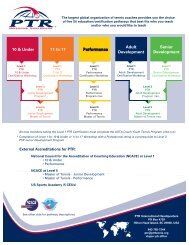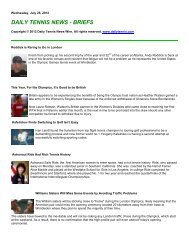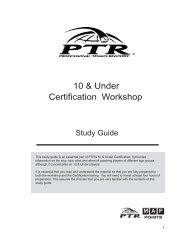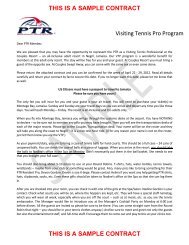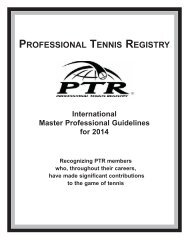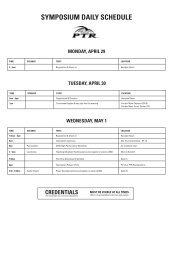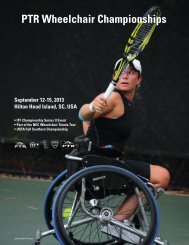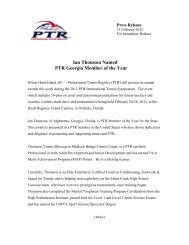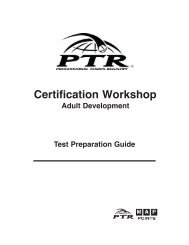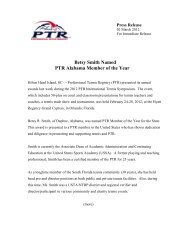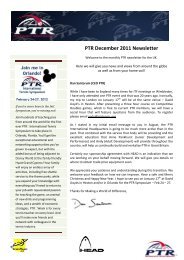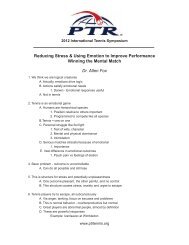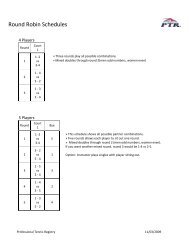SPORT SCIENCE - Professional Tennis Registry
SPORT SCIENCE - Professional Tennis Registry
SPORT SCIENCE - Professional Tennis Registry
Create successful ePaper yourself
Turn your PDF publications into a flip-book with our unique Google optimized e-Paper software.
How the Kinetic Chain WorksMost coaches and teaching pros have heard of the kinetic chain. It is described as using partsof the body, normally starting from the ground up, to transfer energy successively from bodypart to body part. Typically, legs act on the ground, transferring energy to the hips, core,shoulders, upper arm, forearm, and finally the hand, in that order.One might commonly see a stroke with mostly arm motion, and understand that the legs werenot applying force. Normally, such a stroke would generate less power.The well known teaching term loading refers toan initial downward, eccentric musclecontraction, also known as a countermove.That downward movement allows the body toadd and store energy that can be released laterin the stroke. For example, if a tennis playerhad to jump vertically, s/he would first bend theknees, get low and store energy beforeexploding up and jumping into the air. Thekinetic chain results in a summation of forcesor impetus resulting in hitting the ball.Toni LanzoSequence of the kinetic chain is critical. If, on the forehand, the arm moves before the legsload, then the legs don’t contribute to generating power. The term timing also refers to thekinetic chain. Timing of the links is important. For example, a hitch in the serve can reducethe power generated from the rest of the service motion. A hitch loses the momentum of theracquet swing.Finally, it is important to note that kinetic chain results in optimal use of the body. It isn’t aguarantee of maximal acceleration or optimal hitting. For example, a proper kinetic chainmight occur on the serve, but the racquet face doesn’t make accurate contact, resulting in amishit. In addition, if the racquet face moves due to an improper grip, loss of power couldresult.PTR Practical On Court Applications for Sport Science 12



